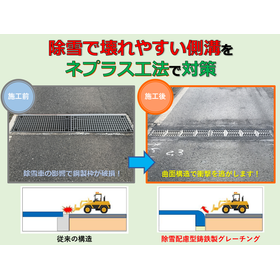Minimal noise, vibration, and dust generation! An attractive seismic reinforcement method utilizing domestic timber.
The "Wooden Seismic Wall Adhesive Method" is a seismic reinforcement technology that fixes wooden panels to existing structures and to each other using epoxy resin. Wooden seismic walls can achieve a load-bearing capacity comparable to that of reinforced concrete seismic walls. This method has been developed and put into practical use as a new way to utilize wood, contributing to the expansion of the "forest cycle" of sustainable forest resources. Additionally, it has received a building technology performance certification from the Japan Architectural Institute, and if designed according to this evaluation, sufficient seismic resistance is recognized. 【Features】 ■ Minimal noise, vibration, and dust generation ■ Possible reduction in construction time ■ Environmentally friendly ■ Safe design and construction methods *For more details, please refer to the PDF materials or feel free to contact us.
Inquire About This Product
basic information
【Other Features】 ■ Wood materials are lightweight, allowing for construction without heavy machinery. ■ Fewer processes compared to RC seismic walls, enabling a shorter construction period. ■ Utilizes domestic and locally sourced materials, and reduces CO2 emissions. ■ No use of substances that contribute to sick house syndrome. *For more details, please refer to the PDF document or feel free to contact us.
Price range
Delivery Time
Applications/Examples of results
For more details, please refer to the PDF document or feel free to contact us.
catalog(1)
Download All CatalogsCompany information
Since its founding, Showbond Construction has walked a path focused solely on repair and reinforcement with the theme of "passing on social capital in good condition to the next generation." Its history can also be seen as the history of maintenance for concrete structures. Showbond Construction is a pioneering company that, since the era of scrap and build during the period of rapid economic growth, has recognized the importance of maintenance and was one of the first in the civil engineering industry to introduce epoxy resin-based adhesives.











